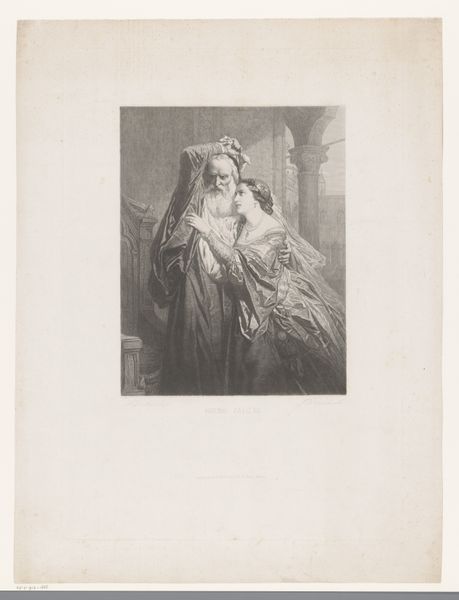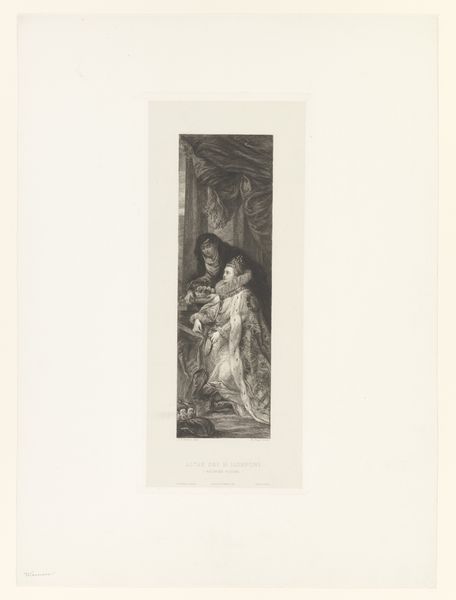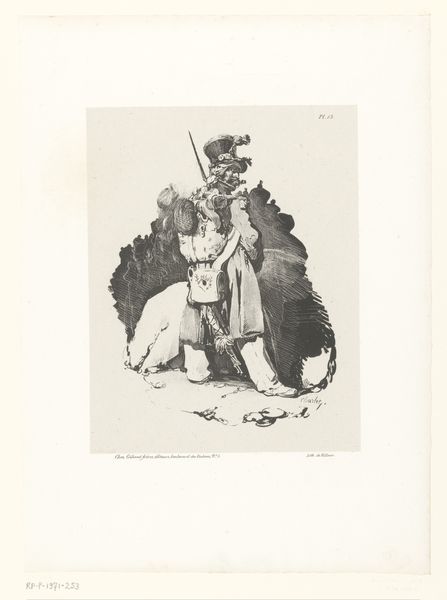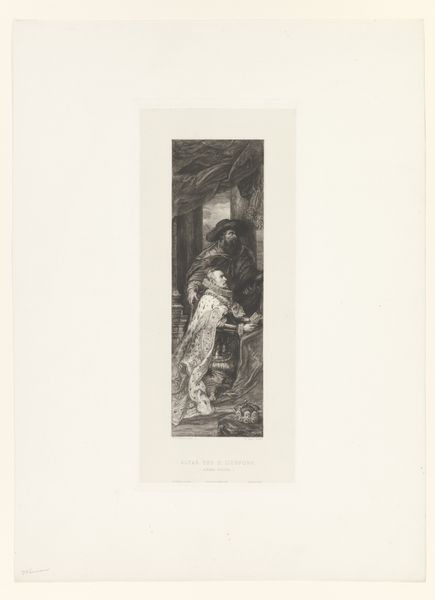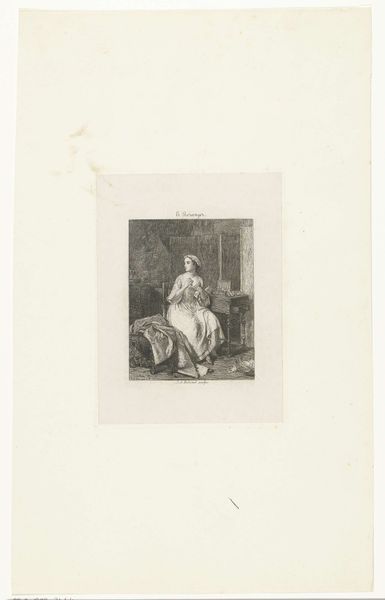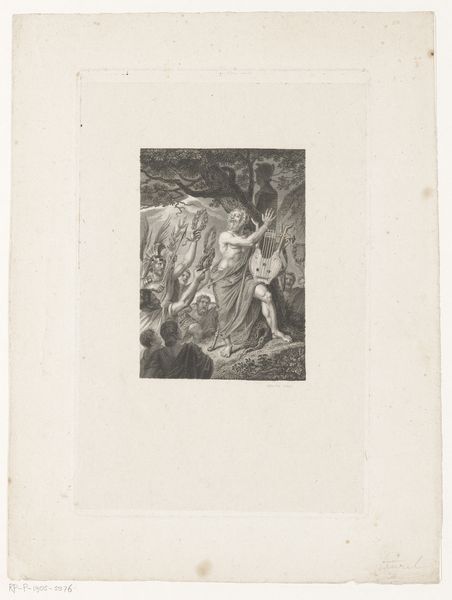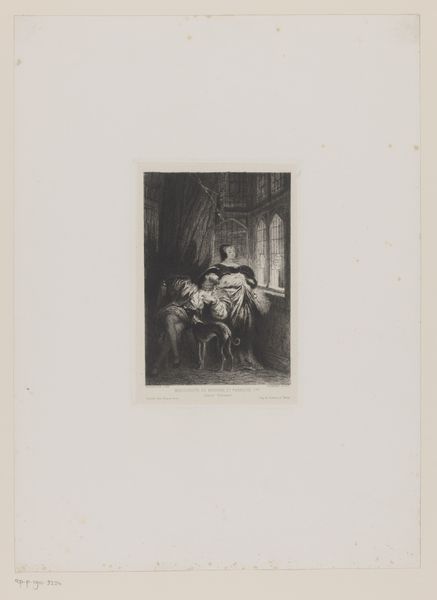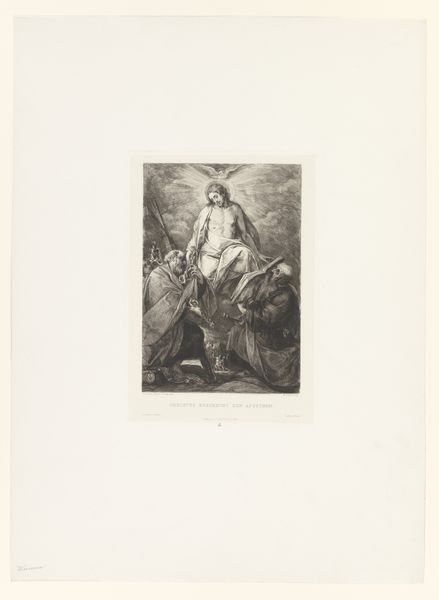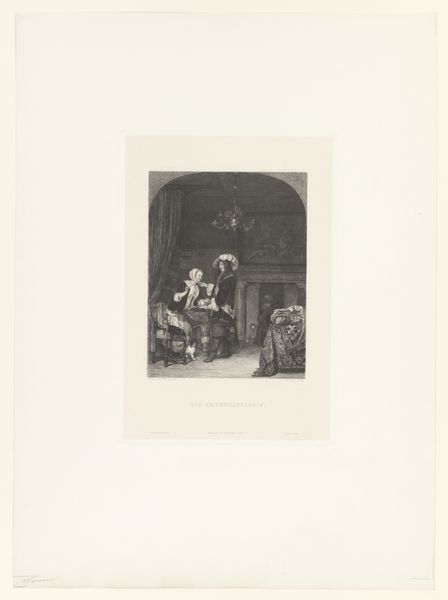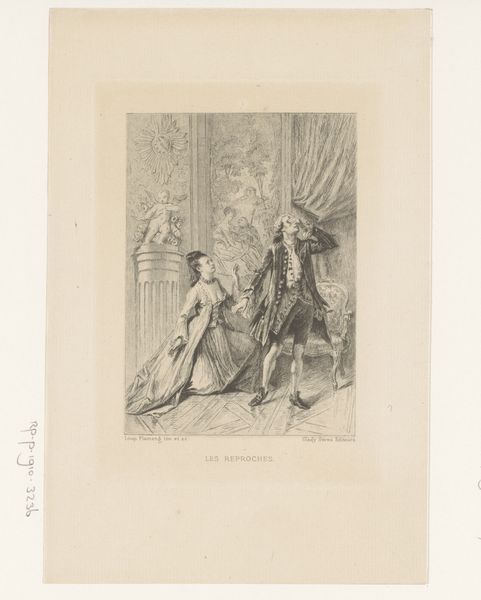
print, engraving
# print
#
old engraving style
#
history-painting
#
engraving
Dimensions: height 335 mm, width 211 mm
Copyright: Rijks Museum: Open Domain
Curator: William Unger created this engraving between 1861 and 1889. The piece, titled "Portret van Nicolò da Ponte," is currently held here at the Rijksmuseum. Editor: The immediate impression is of intense detail rendered with incredible skill; the portrait almost appears to have been drawn with ink and paper, rather than etched, given how minute the linework seems to be at first glance. Curator: It's fascinating to consider Unger’s choices in reproducing this portrait through engraving. An engraving demands intense labor and precision. It's worth wondering about Unger's social position as he recreated historical figures through laborious means. Editor: Focusing purely on the image itself, the contrast is remarkable. See how Unger manages to convey texture – the rough weave of the clothing, the softness of the fur trim, and the intricate details in his headdress. These aren’t merely surfaces; they have depth, dimension, character. The way the light falls…it is more than mimicry; it’s about how Unger interpreted his source material, perhaps a painting. Curator: And it makes one question how widely disseminated these images would have been, offering access to powerful and elite figures but made possible by the labor of a skilled, but less famous artist. How many engravings like this circulated and who controlled that dissemination? What was Unger's relationship to the subject and the original artist? Editor: You make a valuable point about accessibility. Stepping back into purely formalist analysis, notice how the portrait employs visual strategies to construct authority. The slight downward gaze, the firm set of the jaw, the elaborate clothing. Curator: Ultimately, viewing this print invites speculation about who had access to these reproductions of power, and how prints function as historical objects reflecting social and labor structures. Editor: I concur. This close look has not only shown Unger’s virtuosity but also opened several pathways into how we engage with the power structures depicted and reproduced by his hand.
Comments
No comments
Be the first to comment and join the conversation on the ultimate creative platform.
